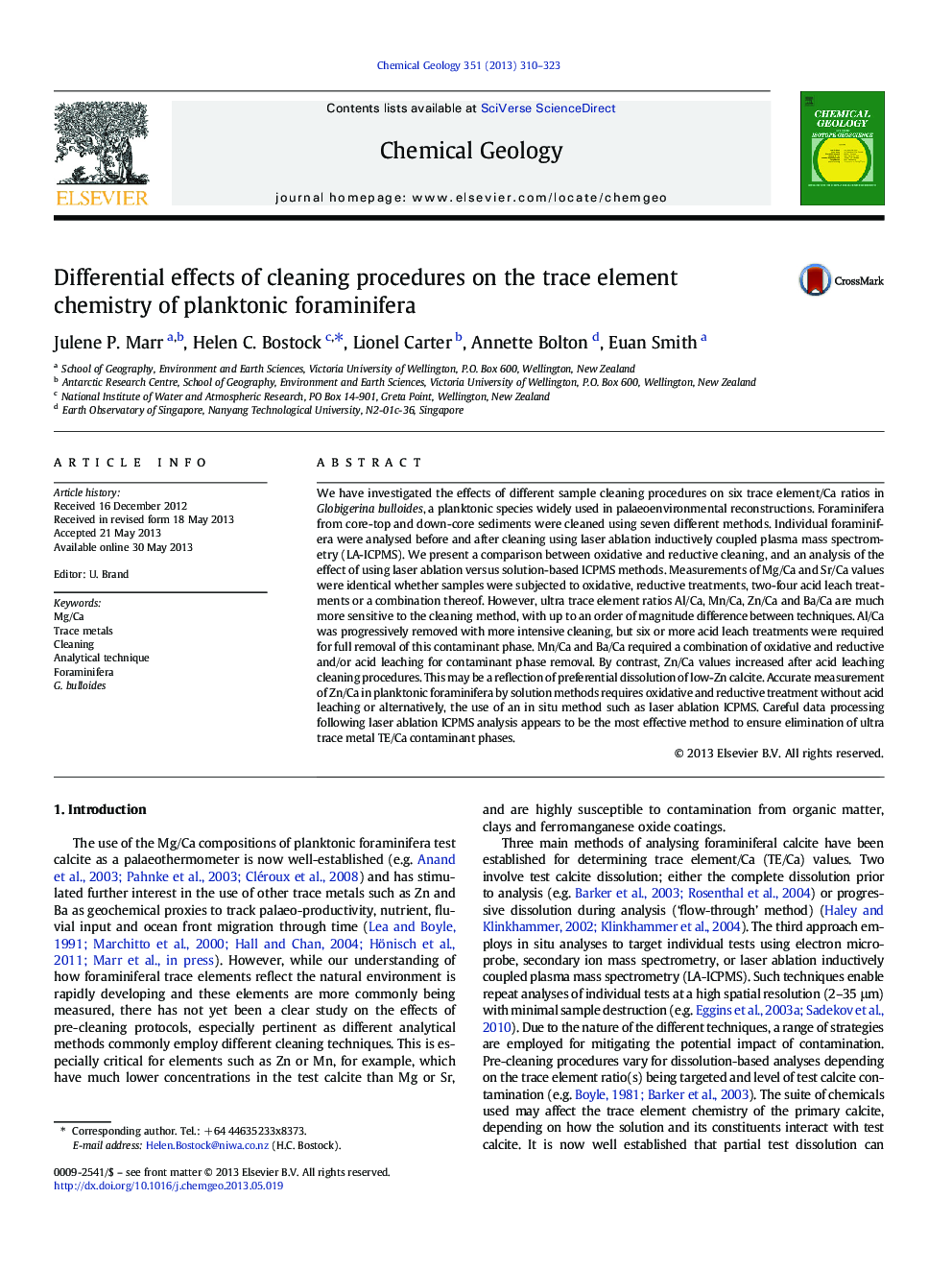| کد مقاله | کد نشریه | سال انتشار | مقاله انگلیسی | نسخه تمام متن |
|---|---|---|---|---|
| 6436939 | 1637618 | 2013 | 14 صفحه PDF | دانلود رایگان |
- Calcite Mg/Ca, Sr/Ca values similar after oxidative, reductive, or two-four leach treatments
- Foraminiferal Zn/Ca values increased after acid leaching cleaning procedures.
- Post LA-ICPMS data processing is most effective for ultra trace metal contaminant elimination.
- Solution-based analyses of ultra trace metals require both oxidative and reductive cleaning.
We have investigated the effects of different sample cleaning procedures on six trace element/Ca ratios in Globigerina bulloides, a planktonic species widely used in palaeoenvironmental reconstructions. Foraminifera from core-top and down-core sediments were cleaned using seven different methods. Individual foraminifera were analysed before and after cleaning using laser ablation inductively coupled plasma mass spectrometry (LA-ICPMS). We present a comparison between oxidative and reductive cleaning, and an analysis of the effect of using laser ablation versus solution-based ICPMS methods. Measurements of Mg/Ca and Sr/Ca values were identical whether samples were subjected to oxidative, reductive treatments, two-four acid leach treatments or a combination thereof. However, ultra trace element ratios Al/Ca, Mn/Ca, Zn/Ca and Ba/Ca are much more sensitive to the cleaning method, with up to an order of magnitude difference between techniques. Al/Ca was progressively removed with more intensive cleaning, but six or more acid leach treatments were required for full removal of this contaminant phase. Mn/Ca and Ba/Ca required a combination of oxidative and reductive and/or acid leaching for contaminant phase removal. By contrast, Zn/Ca values increased after acid leaching cleaning procedures. This may be a reflection of preferential dissolution of low-Zn calcite. Accurate measurement of Zn/Ca in planktonic foraminifera by solution methods requires oxidative and reductive treatment without acid leaching or alternatively, the use of an in situ method such as laser ablation ICPMS. Careful data processing following laser ablation ICPMS analysis appears to be the most effective method to ensure elimination of ultra trace metal TE/Ca contaminant phases.
Journal: Chemical Geology - Volume 351, 2 August 2013, Pages 310-323
